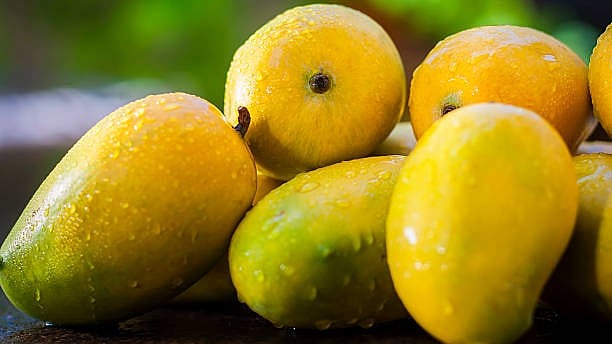
Representative image for mangoes.
Credit: iStock Photo
India’s agricultural economy is no stranger to policy-induced disruptions. Yet, history keeps repeating itself – not due to natural calamities or infrastructure deficits, but because of fragmented governance. Over the past decade, state-level protectionism has consistently undermined the free flow of agricultural produce, turning farmers into collateral damage in a tug-of-war over local price stabilisation.
Consider three telling episodes. In 2015, Punjab restricted potato outflows to Delhi to curb price drops in local mandis. In 2019, Andhra Pradesh’s marine exports to Odisha were blocked, harming fish transporters. During the 2020 COVID-19 lockdown, inter-state vegetable and milk transport was frequently interrupted under inconsistent emergency regulations.
Fast forward to June 2025, and another crisis unfolded. Truckloads of Totapuri mangoes from Karnataka were left to rot at the Andhra border. The reason wasn’t poor harvests or lack of buyers, but Andhra’s decision to block incoming fruit to prevent a local price crash. Karnataka’s mango growers, productive but unsubsidised, bore the brunt.
This is not just about mangoes. It reflects a deeper structural flaw that India refuses to address. Back in 2003, I introduced the Reverse Monetisation Theory, a macroeconomic thesis stating that agricultural yield holds no value unless it can flow and be absorbed by the market. A bumper harvest that cannot reach consumers is merely stranded biomass, representing wasted effort, investment, and opportunity.
At the time, the theory was seen as parochial, with global trade dominating policy discourse. But India’s current challenges have validated its core argument. Subnational trade barriers break the vital link between production and prosperity. Article 301 of India’s Constitution guarantees the freedom of trade across state lines. Yet, perishables remain vulnerable to arbitrary state actions, with no effective enforcement or coordination mechanism at the national level. This void has real economic consequences.
According to some studies, including ICAR-CIPHET, India loses up to 30-35% per cent of its fruits and vegetables post-harvest, largely due to poor logistics and handling. The Ministry of Food Processing Industries and NITI Aayog estimate that these losses cost the country over Rs 90,000 crore annually – a fiscal and food security crisis hiding in plain sight. But logistics wasn’t the issue in the 2025 mango mess. Infrastructure was in place. Buyers were ready. What failed was the regulatory framework that should ensure the seamless movement of agricultural goods. The gap isn’t physical, it’s institutional.
Meanwhile, other nations have capitalised on agricultural exports to influence macroeconomic indicators. The US uses cereal exports to strengthen the dollar. Brazil’s soybean output sways global futures. Australia’s wheat and meat trade shapes GDP forecasts. These countries support their external trade by first ensuring seamless internal movement. India, paradoxically, trips not at international ports, but at its own state borders.
The fallout is not just economic. When farm produce decays on a blocked truck, India’s food security is weakened. With urbanisation and changing dietary patterns, uninterrupted food mobility is no longer a convenience; it is a national security imperative.
Costly blockades
The ripple effects include rising consumer prices, falling farmer incomes, underused cold chains, and dampened agri-tech innovation. When states act in silos, they don’t just block trucks; they block the nation’s potential for inclusive growth. We need a two-pronged solution: political consensus and technological infrastructure.
A National Agri-Movement Facilitation Protocol is long overdue. Supported by a digital agri-stack, it should enable real-time tracking, authorisation, and guaranteed safe passage of produce across states, like a FASTag for food. AI-based monitoring, interstate e-permits, and a federal grievance mechanism should be core components. India must also broaden its definition of food security to include internal mobility. With nearly 70% of agricultural land now devoted to horticulture and perishables, ensuring seamless internal trade is not peripheral; it is foundational to both farmer welfare and consumer access.
Let the Totapuri mango blockade be more than just a case study – it should be a turning point. The next wave of reforms must extend beyond GST and DBT. We need to guarantee frictionless, tech-enabled agricultural flows, empowering farmers not just to produce, but to participate fully in the market economy.
As we march towards the goal of Viksit Bharat by 2047, the creation of a unified domestic food market is non-negotiable. Food must move as freely as finance. The future of India’s economy, its nutritional security, and its global competitiveness all depend on it. And with climate change already disrupting crop zones and patterns, the danger of such protectionism escalating into district-level blockades is very real. The time to act is now. Because if food cannot move, neither can prosperity.
(The writer is Advisor – Technology Management and Digital Transformation, NABARD Consultancy Services)